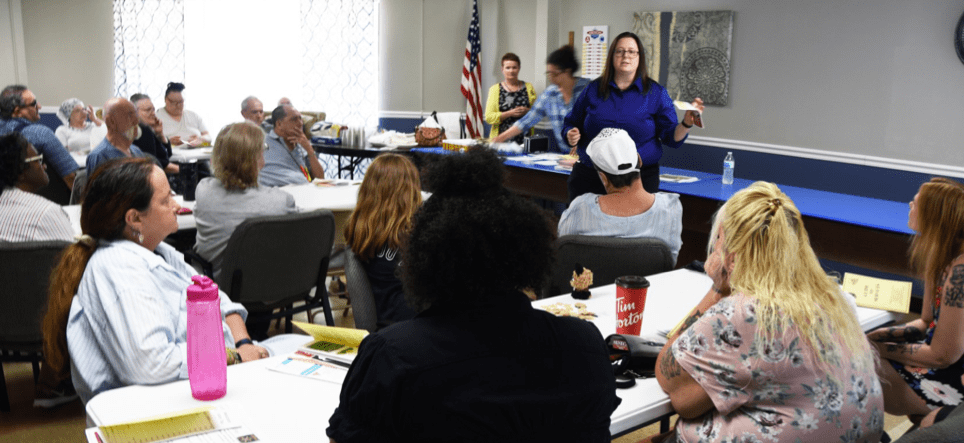
“The Alliance for Better Communities serves Jefferson County, New York,” said the coalition’s Project Director Anita Seefried-Brown. “The economy has always been heavily supported by agriculture, particularly dairy farming and by some of the oldest paper mills in the state. Jefferson County is located at the east end of Lake Ontario, a region of New York called the ‘North Country.’ Thousands of international tourists visit the area during the summer months, bringing a much-needed economic boost to the local economy; however, the tourism boom is accompanied by a darker side in which some bars and restaurants relax safe-alcohol-server guidelines, often resulting in public drunkenness and fighting as well as increased drunk-driving and drunk-boating incidents.”
“In addition, Fort Drum, home of the United States Army’s 10th Mountain Division, the most deployed division since the start of the Afghanistan and Iraq wars, is located with the borders of Jefferson County,” said Seefried-Brown. “According to the American Community Survey, between 2013-2017, 21.1% children in Jefferson County were living below poverty level. The area is also a High Intensity Drug Trafficking Area (HIDTA) with drugs, including heroin and fentanyl, flowing into the County. Moreover, numerous wineries, distilleries, off-and on-premise alcohol establishments and microbreweries operate in the county, a situation that creates high availability, social access to alcohol, favorable attitudes and lowered perceptions of risk and harm toward alcohol use.”
“The Alliance for Better Communities evolved from the unfunded Rapid Response Coalition, which was established in 2012 in response to the synthetic drug crisis,” said Seefried-Brown. “During efforts to address this problem, other drug-related conditions negatively impacting the community came to light, including youth alcohol, prescription drug and other substance use. On October 2, 2012, after successfully working with the Jefferson County Legislature to sign into law a local ordinance banning the sale, possession and distribution of synthetic drugs, the Rapid Response Coalition decided to continue its operations as the Alliance for Better Communities to re-focus its efforts toward two prioritized problems: prescription drug misuse and overdose prevention and youth alcohol use. In 2014, SAMHSA provided the coalition with Drug-Free Communities funding.”
“The Alliance for Better Communities learned from various sources, such as the National Institute on Alcohol Abuse and Alcoholism (NIAAA), that up to 17% of senior citizens might be affected by alcohol and prescription-drug use and misuse, that they are often undiagnosed and that they often go untreated,” said Seefried-Brown. “Also, an online and hardcopy survey directed to youth in grades 7 – 12 called Youth Medicine Survey revealed that 74.2% of youth, when asked ‘How did you get prescription medications that were not prescribed to you?’reported they obtained drugs at home, and 16.5% reported they got them from grandparents’ or other relatives’ homes. After brainstorming how best to bring vital awareness and education to seniors in the places they live, the Health Sense for Seniors program was born.”
“Once we discussed these findings at a coalition meeting, other member agencies provided information to support the need for this program,” said Seefried-Brown. “The Attorney General’s office stated that senior citizens are the preferred target for online and telephone scams; a pharmacist indicated that many seniors have trouble managing their prescriptions, especially opioid-based prescriptions; the representative from the Jefferson County Office of the Aging stated that many seniors are not fully aware of the plethora of services offered to persons age 65 and older.”
“The Alliance partnered with the management and administration of senior citizen centers to present an 80-minute presentation,” said Seefried-Brown. “Once the program segments were finalized and the housing centers confirmed, we invited local media to cover at least the first event, to bring broader awareness about this issue to the wider Jefferson County community. We confirmed 13 senior citizen sites and a total of 250 seniors attended the programs.”
“During these presentations, it became apparent that older adults living in high rise buildings engage in drug-seeking behaviors and will bully their neighbors into sharing their prescription pain medications,” said Seefried-Brown. “Additionally, seniors reported that adult children, grandchildren, or caretakers have bullied them into giving up their pain medications or have stolen their medications. A call to the adult protective unit also revealed a spike in elder abuse allegedly connected to adult children or grandchildren demanding prescription pain relievers, especially among senior citizens who were hospitalized.”
“The goal of Health Sense for Seniors program was to bring education and awareness to seniors in four segments, in the familiar context of their housing complexes,” said Seefried-Brown. “First, a certified prevention professional provided the alcohol and prescription- medication portion, with an emphasis on pain medications, recognizing signs and symptoms of abuse and safe medicine storage and disposal. At the conclusion, each participant received a free medication lock box. Next, a pharmacist answered specific questions about potential medication interactions. Participants were invited to bring their medications to the event, and the pharmacist checked medications for potential interactions and outdated prescriptions. Then, a representative from the Attorney General’s office provided information about how to protect against phone and internet scams, and how to protect against identify theft. Finally, a representative from the Jefferson County Office for the Aging provided information about available services and programs and how to access these services.”
“While we delivered the Health Sense for Seniors programs throughout Jefferson County, each program had its own feel depending on the level of base knowledge, participation and feedback from the attendees,” said Seefried-Brown. “Some seniors struggled with the idea that prescription pain medications are potentially addictive because they were prescribed by their doctor. While most seniors used the same pharmacy for all their prescriptions, many felt that they were not fully informed about potential medication interactions. The pharmacists who delivered the second part of the program, all employed by a locally owned pharmacy, indicated that they will revisit their education policies regarding this issue. Although the Attorney General’s office’s topic pertained to online and phone scams, the assistants to the Assistant Attorney General in Charge were drilled about a wide range of topics.”
“The Alliance for Better Communities will continue to foster positive relationships with senior citizen centers for the purpose of bringing further education and awareness events, and to partner with individual seniors about becoming partners in prevention,” said Seefried-Brown. “We are also planning to attend the CADCA Mid-Year Training Institute, and I hope to learn strategies on utilizing senior citizens’ knowledge and wisdom in becoming essential partners in youth alcohol and substance use prevention—perhaps matching seniors with youth somewhat similar to the Big Brother/Big Sister program.”

